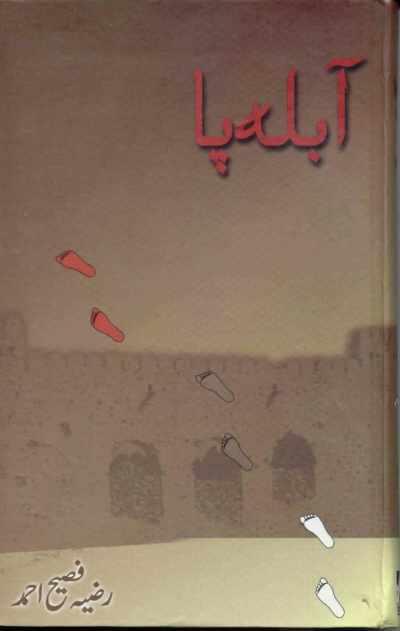





Ismat's 'Tehri Lakeer' was a rare specimen of character writing which helped make it fantastically famous and let it achieve heights that a very few Urdu novels have been able to attain. Razia Fasih Ahmad's novel under review - Abla Paa - is another successful attempt in this field. A lot of authors after Ismat have tried their mettle in the arena of character writing, but Abla Paa is the first novel in which this art has been advanced in a new and unique way, in that a single character is presented using a number of different viewpoints.
In the first half of the novel, the character of Saba, the heroine, is presented from her own viewpoint based on her environment and the events of her past and present. This viewpoint contains depth of personality. These are the observations of a little girl who is used to quietly contemplating her surroundings. Everything she experiences moves her, but she never verbalizes what she feels. She has created a vacuum in her life through a sense of depravation and although when she tries to look back at her childhood she can visualize everybody she knew very realistically, she realizes "she has lost herself" in the process.
In the rest of the novel, this very character is presented through other characters' viewpoints. These other viewpoints include those that love innocence and natural beauty, but also those who crave showy artificiality and western culture. It also includes feminine as well as masculine viewpoints; in short every aspect of this character has been thoroughly scrutinized.
One of the most important characteristics of this novel is its flow. The novel is divided into three parts, where every part starts with a first person account, but changes to third person by the end. The interesting thing is that the first person account at the beginning of each part is of a different character. It seems as if each character appears on the stage to present the story from his or her own point of view and introduce the main characters from a different angle. But, the reader never gets a sense of either discontinuity or repetition. On the contrary, reality seems to be unveiling gradually.
The environment of this novel is improbably "normal." The novelists of the eighteenth century had devised a format which they called "normal." This was in contrast to sexual "abnormality" or intellectual showmanship which were common devices used by writers in that era. The beauty of this author's writing is that it is very normal. She has managed to keep her writing simple and at arms length of idealism.
One aspect of the novel under review might be slightly annoying to the reader, which is the length that it goes to set the stage. Descriptions of scenic beauty are presented very well, which suggests to the reader that the author has a deep appreciation of natural beauty. But sometimes the length of these descriptions make it seem the story has taken a detour.
- Translated from a review by Alif Alif, Akhbar e Khawateen, March 1966.


